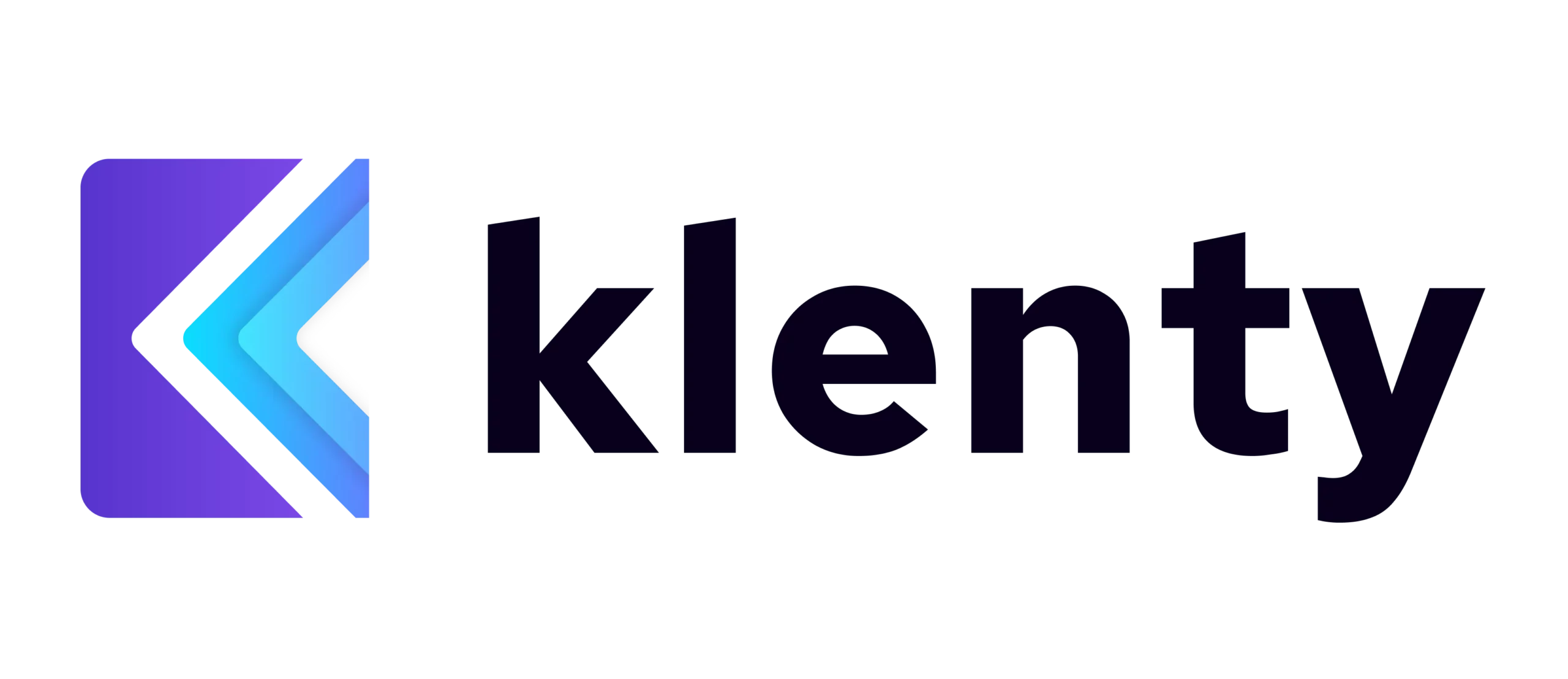Outbound sales has been a viable sales strategy for businesses for ages. It’s tried, tested, and proven to work repeatedly.
Many factors play into the success of an outbound strategy, but the one thing they all have in common is a good, quality sales prospecting list, of course. Without reaching the right prospects, outbounding is fruitless.
Well, you just build a list with the right contacts, and then you’re set, right?
Yes, but also no. Building a prospecting list comes with its own set of challenges. Sales reps need to identify the right buyer, collect all their contact information, and store them in an easily accessible place. Most companies even fail to include crucial information in their lists!. Sales prospecting sets the foundation for outbound outreach success.
Understandably, it takes up a lot of your time—which means less time actually selling, fewer meetings booked, and your quotas suffering a hit.
Don’t worry, though. We spoke to 4 sales leaders about how to build the perfect prospect list to ensure your outbound is off to a great start.
Presenting their expert opinions…
What Is a Prospect List?
A prospect list is a repository of information about your potential customers, like their names and contact details, usually represented in the form of a data sheet. Sales or marketing teams use these lists for outbound outreach campaigns.
It’s worth noting that these lists do not contain information about qualified leads. A prospect is someone you have not established contact with, whereas a lead has clearly expressed interest in your solution via your website form or by responding to your outbound email/call.
What Should You Include in a Prospect List?
There’s no one-size-fits-all formula to draft a perfect prospect list. What you include in it depends entirely on your industry, the product you’re selling, and your overall business goals.
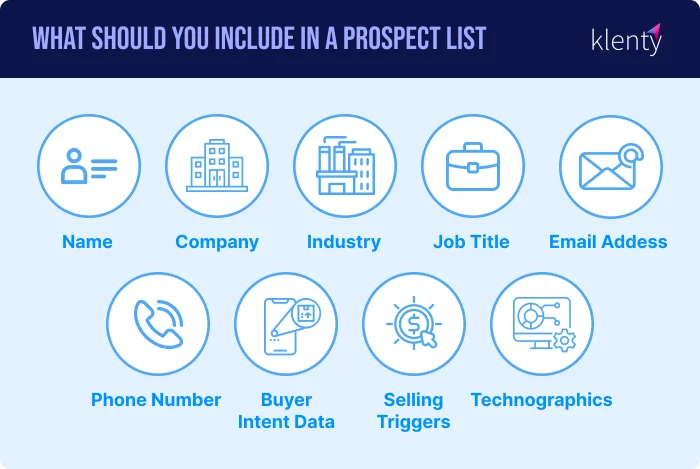
However, if you’re wondering where to begin, here’s your starter pack. We’ve divided this data into two categories: essential and beneficial.
Essential Information:
- Prospect's name: the first thing you need to know about your prospect.
- Basic company details: find out where they work, what's the company size and location. Researching your prospect’s company lets you know if they’re a best-fit candidate for your solution.
- Industry: lets you tailor your messages to their industry-specific pains.
- Job title: their role—it helps to know if they’re a decision-maker or an end user. Either way, it is beneficial information to understand how to target them.
- Email address: of course, you need their email address to contact them.
- Phone number: for all your cold calling purposes.
Beneficial Information:
- Buyer intent data provides valuable insight into the potential buyer’s intent to purchase. For example, they may have checked your solution on review sites or visited comparison pages.
- Selling triggers indicate your prospect’s readiness to interact with your product or service. These include events such as leadership changes or fundraising.
- Technographics: list of software your target companies currently use. You may find that your prospect’s company uses adjacent software (like those you integrate with); this could be a good selling point.
What Are the Uses of Prospect Lead List?
Abhishek Shah, Founder of Testlify, tells us, “A well-curated prospecting list is a cornerstone for successful outreach campaigns. It enables personalized communication tailored to the needs and interests of potential clients. Use the list to segment your audience, allowing for targeted messaging and increased engagement. Additionally, a prospect list serves as a valuable resource for tracking and analyzing customer interactions, facilitating data-driven decision-making for your business development strategies.”
Additionally, the following are some ways you can use your top prospecting list:
Prioritize Prospects That Are Ready to Purchase
As we mentioned earlier, buyer intent data highlights prospects actively looking for a solution, making them the first category you need to target. Analyze how frequently your prospect visits your website or checks you out on review sites. Rank them based on behavioral triggers—helps you prioritize the prospects with more signs of readiness.
Save Time and Capital
Drafting a targeted prospect list can save you tons of time and money. Instead of casting a wide net and reaching out to a broader audience, an organized list of prospects allows you to hone in on specific demographics, industries, or buyer personas likely to respond. This saves you time and reduces the unnecessary expenses associated with contacting uninterested prospects.
Plan the Perfect Pitch
Creating an accurate prospect list with as much information as possible gives you an edge over the others in the market. Personalization comes naturally, and all your messages are catered to your prospects—increasing the chances of a response.
Save Time and Resources
Screening prospects while building your prospect list saves your sales team a significant amount of time, as they won’t focus their energy on prospects that are least likely to convert—leading to a faster sales process.
Increase Revenue and ROI
A well-defined and robust prospect list ensures that sales professionals spend most of their time on converting only those leads that fit the ICP. This means accounts may get closed sooner, have better lifetime value, and lower churn rates—resulting in a better ROI in the long run.
Better Channel Management
When you’re building your prospect list, you collate all your prospect’s preferred communication channels in one place. This means you can use a combination of channels like email, phone calls, social media, instant messaging (like Slack or WhatsApp), and SMS to reach out to prospects based on their preferences and where they’re most active.
Position Your Product/Service Based on Prospect Needs
Prospect list building is a good exercise in understanding your prospective customers' needs. It guides you in customizing your approach to match their specific needs and pain points, making it more attractive and driving them towards purchasing.
How To Build a Sales Prospect List?
Some businesses find that creating a sales prospecting list from scratch is rather time-consuming and overwhelming. While that may be the case, it also offers long-term benefits. For starters, once you’ve nailed down your ICP and detailed their information, your outbound process can flow smoothly with no back and forth.
That being said, let’s understand how to organize your business prospect list.
1. Define Your Buyers
The first step in building a prospect list is to understand your buyers down to a T. This is where your ICP comes into the picture. ICP, or Ideal Customer Profile, is a detailed and semi-fictional representation of the perfect customer for your business.
Here’s an example of a sample ideal customer profile.
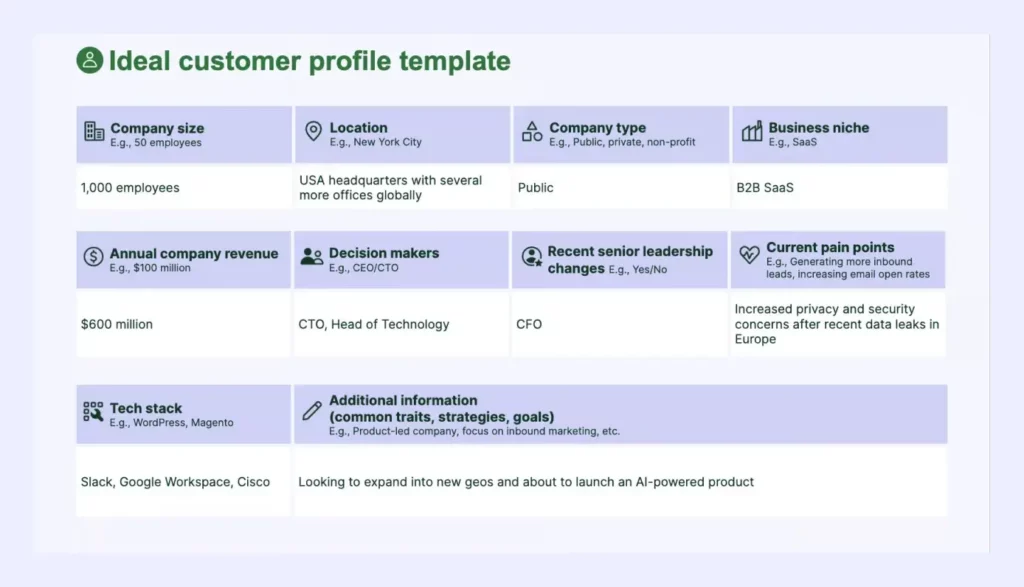
(Source)
Whether you’re a new startup or an established business, make sure to answer these questions while defining your buyer profile:
- What problem does your company solve?
- Who are your target audience?
- What’s their demographic and geographic information?
- What’s their job title?
- What industry do they belong to?
- What tech stack do they typically use?
- What pains do they face that might push them to consider your solution?
- Who is involved in the buying process?
- What's your ideal customer's company location?
Then, identify the list of companies that suit your ICPs and take stock of all key decision-makers within these companies. You can do so by researching company websites and LinkedIn profiles.
2. Collect Contact Information
Next, you must procure their contact information - email IDs, phone numbers, social media handles, etc.
The most straightforward way is by going through each company’s LinkedIn page, identifying the decision makers you want to target, and copy-pasting their contact information into your prospect list spreadsheet.
However, this is a tedious process. The alternate and easiest way to obtain prospect contact information is through lead generation software, which brings us to the next step.
3. Build Your List Using Lead-Generation Tools
Various lead generation software that automates finding your prospect’s contact information is available.
These tools have filters that zoom in on your niche audience. This takes up a lot less time than manual prospecting.
Once you’ve developed your list of prospects, you can export them as .csv or Excel files.
Note: while choosing your lead generation software, always look for ones that provide a data guarantee and a way to validate your data before purchasing.
4. Revise Your List
To double-check, run your list through list-cleaning software (like ZeroBounce for emails) to eliminate duplicate, invalid, and spammy contacts.
Remember: your outbound outreach is only as good as your list quality. The poorer the contact data, the more time and resources are wasted.
5. Upload Your List into Your CRM
Once you have a clean and updated list, it’s time to implement it. Upload it into your CRM to easily access, edit, and view all prospect data in one place.
Some CRMs also have automation capabilities that let you reach out to prospects immediately. In such cases, add your lists into sequences directly to kickstart your outbound strategy.
6. Strategize and Begin Your Outreach
Finally, before you jump right into contacting your prospects, it’s always good to have an outbound strategy in place.
The structure and mediums through which you reach out to potential prospects depend on your business goals, product or service, and ICP. Prepare a clear plan for whether you’re reaching out to prospects in batches, how often you want to follow up, what the next course of action should be for each touchpoint and response, and all the different approaches you’ll use in your outbound strategies from the get-go.
Tips for Building a Great Prospect List
Now that we’ve covered how to develop a prospect list, how to make it great?
According to James Smith, “A good prospecting list is like a roadmap for your sales department.” And just like a roadmap gives you clear direction, your prospecting lists must also align with your goals and targets.
Let’s look at a few tips on how to make an excellent prospect list:
- Prioritize your list: Prioritization in outbound prospecting is crucial because you can focus on prospects that are more likely to convert first and allocate all resources accordingly. By turning your attention to high-potential, relevant leads, you can put in the time and work to really get to know your prospects. Then, use this research to craft highly personalized outreach campaigns that specifically cater to their needs and pains. This way, you’ll identify high-quality prospects early on in the sales funnel and maintain a steady and targeted outreach, ultimately leading to higher response rates and a more substantial sales pipeline.
- Automate what you can: Automation is critical. Manually getting through to each prospect (and remembering to send follow-up emails up on time and consistently) is impossible. Automating mundane and repetitive activities frees up enough of your time to research, craft meaningful messages, and build and nurture relationships with prospects.
- Refine your ICP and buyer personas: Use your current customer database to refine your ICP. We mean really dig deep into your customers’ behavior—the final push to buy, average pricing, heartburns before they found your product—any information you can gather. Now apply these details while finding your ideal ICP and buyer personas, as they’re the ones that are your best-fit future customers.
- Invest in a robust CRM: As mentioned earlier, the CRM is your best friend. It contains every little detail about your leads and customer base, serving as one single source of truth. Because of this, your CRM software needs to be the best in the market with robust and advanced features.
When we asked Julian Patrick, Founder of Stovefitter’s Warehouse, how he benefits from a CRM, he said, "CRM systems' reports and analytics features give us useful information and measurements that help us improve our marketing and sales strategies. This way, our prospecting efforts keep changing and getting better results.”
Are MS Excel and Google Sheets Effective for Building Prospecting Lists?
Spreadsheets (Excel or Google Sheets) can build a prospect list. The process: you have to research prospects on various online platforms, note their information, verify contact information from multiple sources, and update each field on your spreadsheet individually. That’s a lot of manual work and eats into the time you should be using for selling.
Not to mention, manual, mind-numbing work is prone to human error and increases the chances of data inaccuracies—which again leads to wasted time, resources, and emotional distress.
Instead, you can opt for sales prospecting tools that integrate with your existing CRM. These tools help sales teams automate prospecting and update your prospect list without manual intervention.
Sales Prospecting List Templates
To get you started, here are some sales prospecting list templates that will help you capture the most essential customer information during your prospect list building.
Business Form’s Prospect List Template
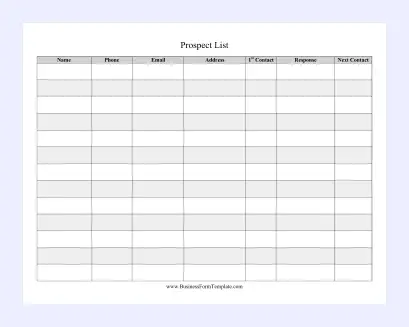
(Source)
This template from Business Forms allows you to enter the basic customer information before you start your outbound outreach strategies.
Sales Prospecting Sheet from Sample Templates
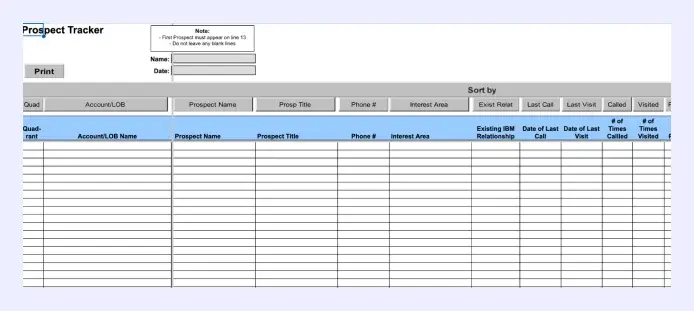
Sample Templates offers 5+ free prospect list templates, but the one in the image is our favorite. Although this prospect tracker sheet helps you stay on top of each prospect’s status, it can double as a prospect list format. Containing fields like existing relationships, interest areas, and the number of visits, calls, and proposals, this tracker is a comprehensive guide to monitoring your prospect’s progress.
Prospecting List Checklist for Salespeople
Before investing in a prospecting list provider, make sure to check the following:
- Are they compliant with data privacy laws, such as GDPR?
- Do they have adequate filters to zero in on your ICP?
- Do they verify B2B contacts?
- Do they provide additional data points, such as buying triggers and intent data?
- Is it easy to set up and implement their solution?
- Do they provide full database access? If not, how much do they charge for extra data points?
- Are there integrations to automate data flow between various other sales tools?
- How good is their customer support?
Build the Best B2B Prospect List Using the Best Platform
As Vaibhav Kakkar, Founder of DigitalWebSolutions, puts it: “The prospecting list serves as a foundation for targeted marketing campaigns, personalized communication, and strategic sales efforts. It allows businesses to focus their resources on leads with the highest potential, increasing the likelihood of conversion and fostering long-term customer relationships.”
Building the best prospect list is the first step in creating a winning outbound sales strategy. After all, when your foundation is strong, it’s hard to break.
However, this comes with its own set of issues:
- Hours wasted looking for ideal ICPs
- Poor quality numbers result in low connect rates
- Inability to research multiple prospects from the same company
Alas! All your effort goes down the drain if you cannot produce results from your list.
That’s why you need the right tool to automate the prospecting process. Luckily, we have just the one: Prospect IQ by Klenty.
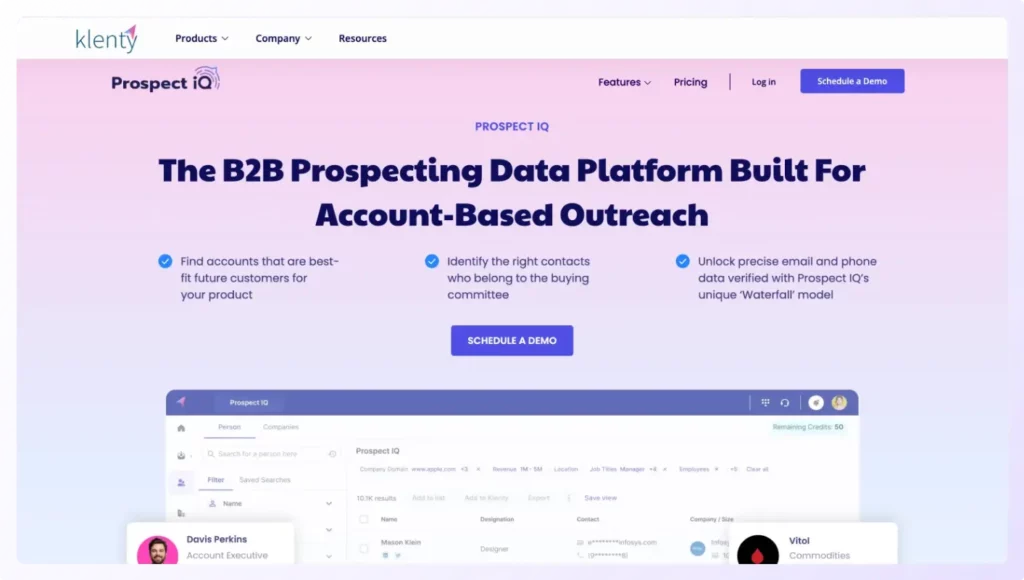
Prospect IQ is a B2B prospecting data platform that houses over 440M+ contacts and helps you:
- Filter prospects based on company name, industry, department, revenue size, technologies used, domain name, and so on
- Save your “ICP” or “Best Customer Lookalikes” as Views that can be readily accessed
- Target prospects with unique needs based on demographics, geographic, or technographic data
- Execute a set of personalized activities as soon as you get your hands on their contact data
- Sync all information back to your CRM to keep an updated system of record
What’s most unique about Prospect IQ is its “Waterfall Model” for lead enrichment. Prospect IQ screens over 10+ data providers instead of single-source data platforms and surfaces the best-fit customer information.
Curious to know more about how Prospect IQ can help you populate your prospect list with high-quality data? Contact us to get a tailored demo now!
